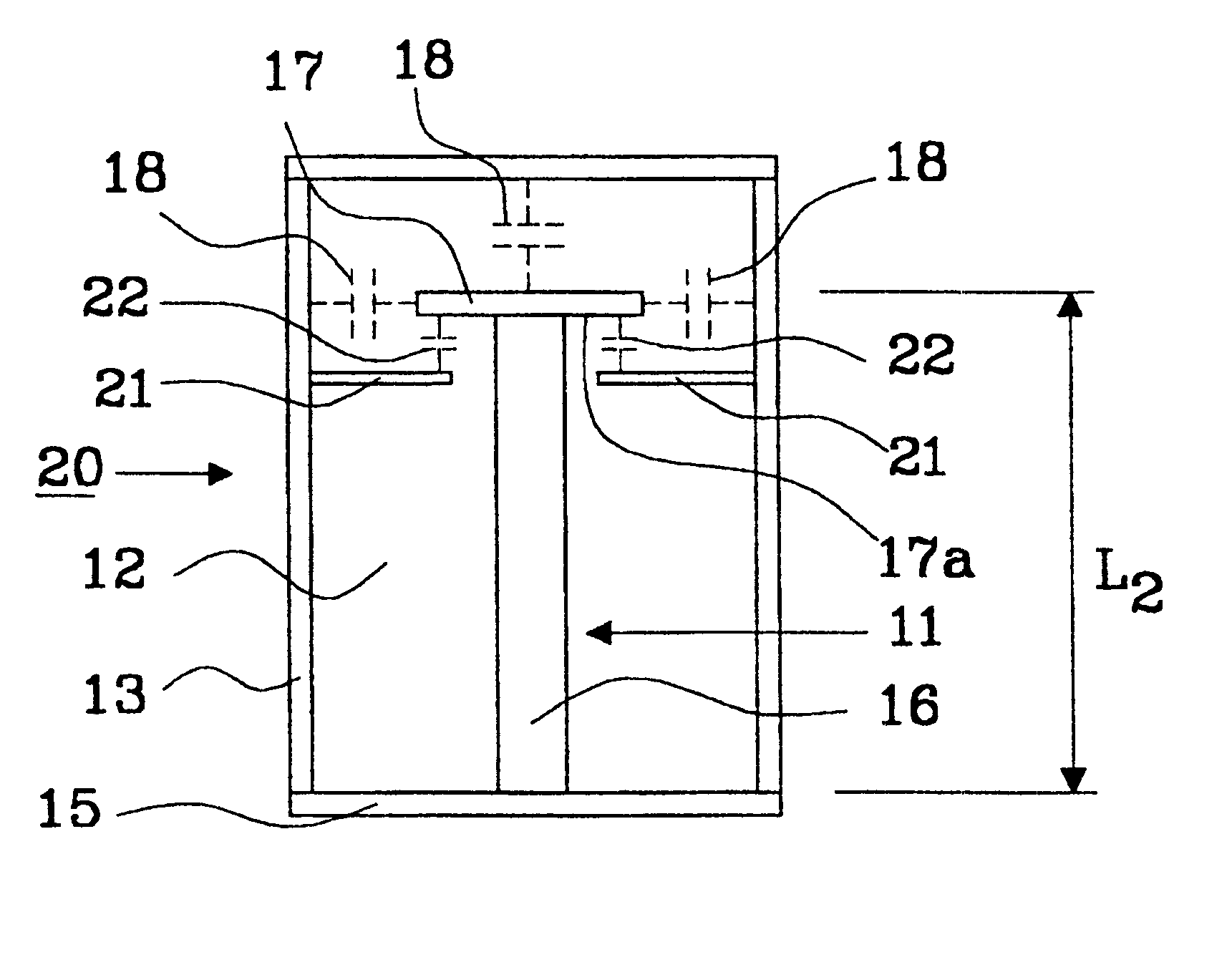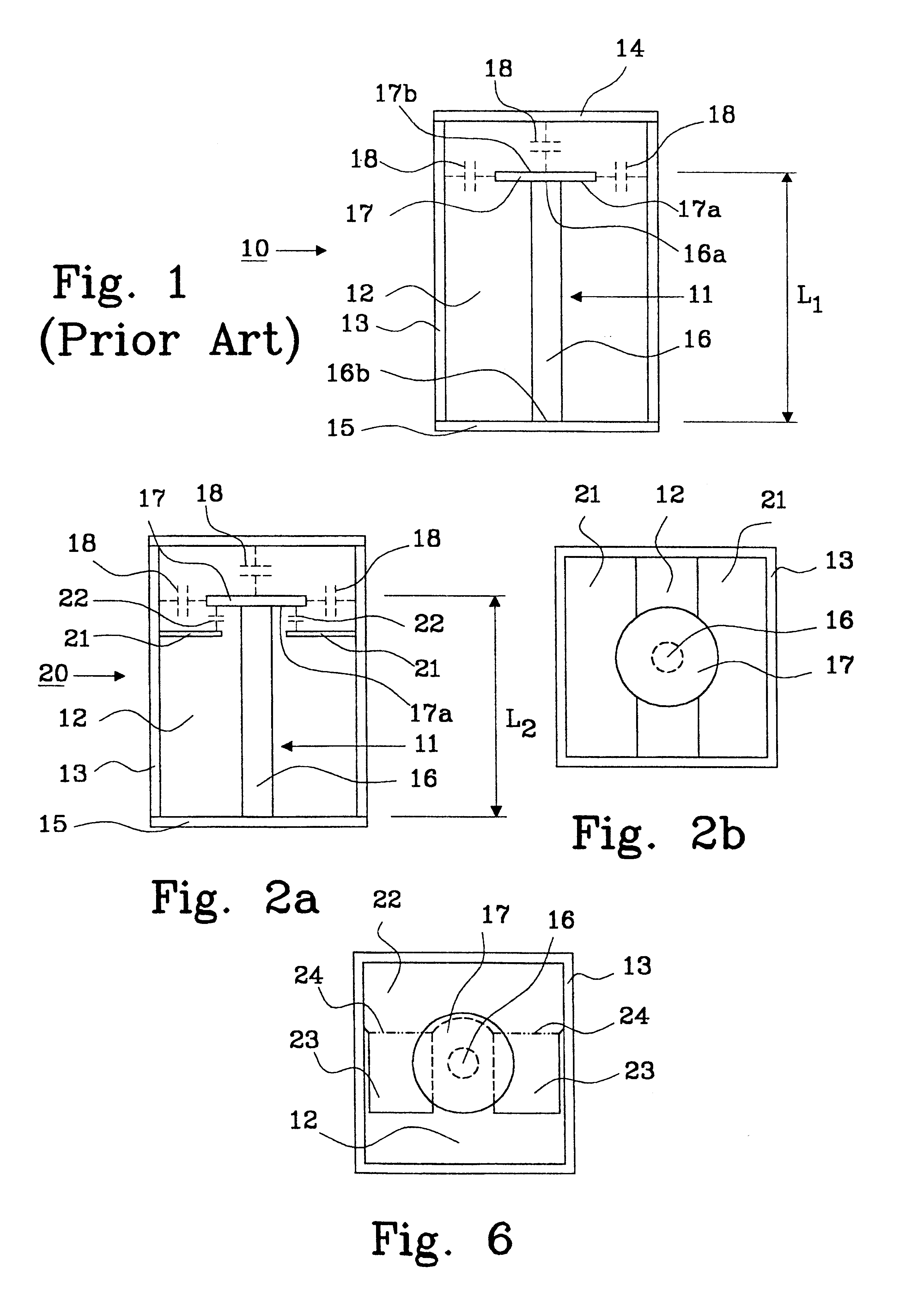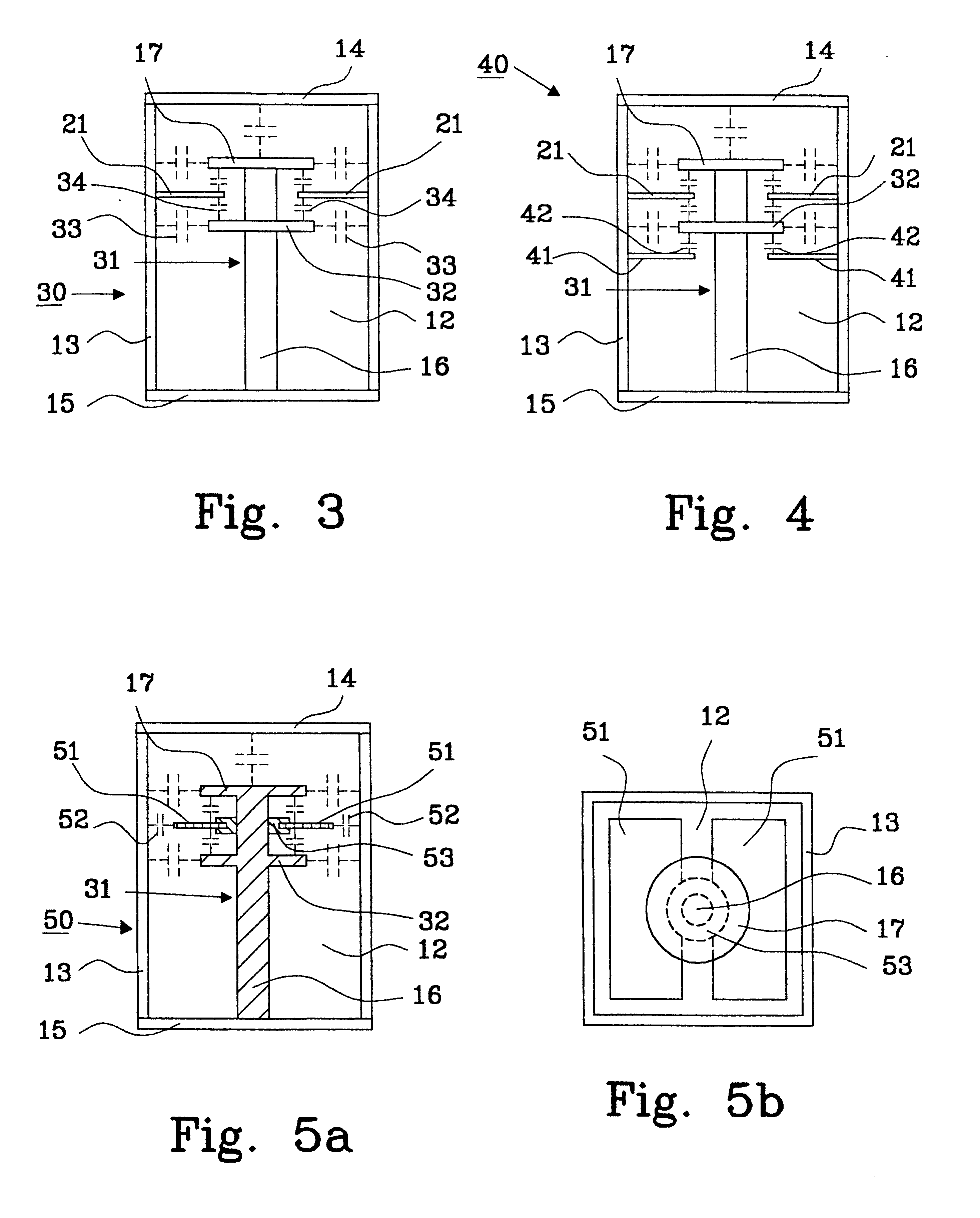Coaxial cavity resonator
- Summary
- Abstract
- Description
- Claims
- Application Information
AI Technical Summary
Benefits of technology
Problems solved by technology
Method used
Image
Examples
Embodiment Construction
FIG. 1 shows a hat resonator 10 according to prior art. It includes, among other things, a conductive body 11 located inside a cavity 12. The cavity 12 having side walls 13, a top wall 14 and a bottom wall 15. The conductive body 11 comprises a conductor rod 16 and a main conductor disc 17. An end 16a of the rod 16 is connected to a first side 17a of the main disc 17. A free end 16b of the conductor rod 16 is in short-circuit connection with the bottom wall 15 of the cavity 12. A second side 17b, opposite the first side 17a, of the main disc 17 is in open-circuit relation with the top wall 14 of said cavity 12. Capacitive coupling 18 between the disc 17 and the top wall 14 and side walls 13 of the cavity 12 shortens the required length L.sub.1 of the conductive body 11 for operation at a specific frequency.
FIGS. 2a and 2b shows an improved embodiment of a hat resonator 20 according to the present invention, where one or more plates 21 are located in the cavity 12. The plate (s) 21 a...
PUM
 Login to View More
Login to View More Abstract
Description
Claims
Application Information
 Login to View More
Login to View More - R&D
- Intellectual Property
- Life Sciences
- Materials
- Tech Scout
- Unparalleled Data Quality
- Higher Quality Content
- 60% Fewer Hallucinations
Browse by: Latest US Patents, China's latest patents, Technical Efficacy Thesaurus, Application Domain, Technology Topic, Popular Technical Reports.
© 2025 PatSnap. All rights reserved.Legal|Privacy policy|Modern Slavery Act Transparency Statement|Sitemap|About US| Contact US: help@patsnap.com



